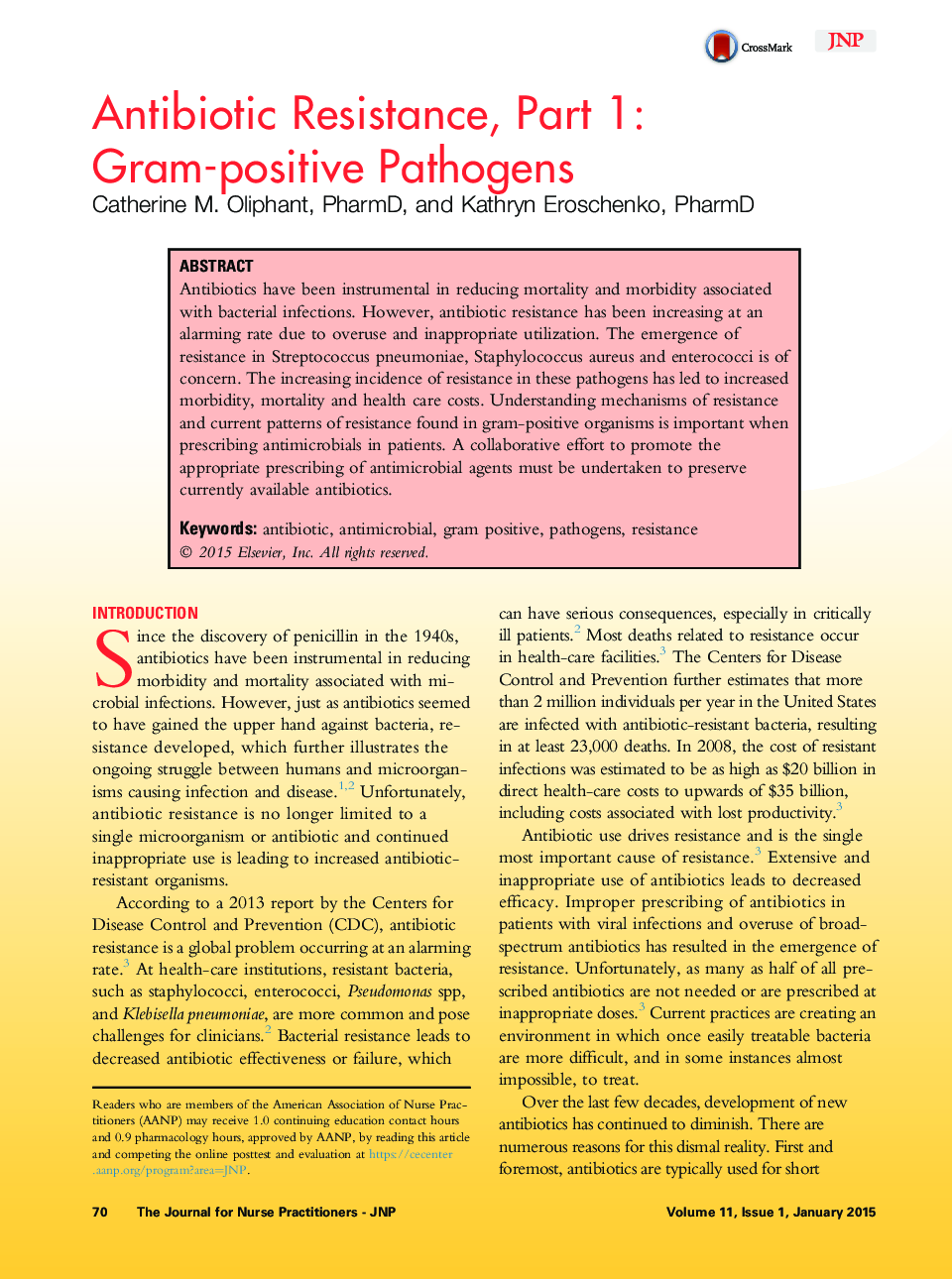| Article ID | Journal | Published Year | Pages | File Type |
|---|---|---|---|---|
| 2663423 | The Journal for Nurse Practitioners | 2015 | 9 Pages |
•Antimicrobial resistance is a global problem occurring at an alarming rate.•Mechanisms of resistance include alteration/eradication of target binding sites, enzymatic inactivation of the antibiotic, efflux pumps, and alteration of porin channels.•Penicillin nonsusceptible Streptococcus pneumoniae often exhibit cross resistance to macrolides, clindamycin, trimethoprim-sulfamethoxazole, and tetracyclines.•Staphylococcus aureus resistance includes methicillin resistance which can be classified as community associated or healthcare-acquired, with healthcare-acquired strains being resistant to more antibiotics than community-acquired strains.•Enterococci are intrinsically resistant to many antibiotics and have acquired resistance to most antibiotics, including vancomycin.
Antibiotics have been instrumental in reducing mortality and morbidity associated with bacterial infections. However, antibiotic resistance has been increasing at an alarming rate due to overuse and inappropriate utilization. The emergence of resistance in Streptococcus pneumoniae, Staphylococcus aureus and enterococci is of concern. The increasing incidence of resistance in these pathogens has led to increased morbidity, mortality and health care costs. Understanding mechanisms of resistance and current patterns of resistance found in gram-positive organisms is important when prescribing antimicrobials in patients. A collaborative effort to promote the appropriate prescribing of antimicrobial agents must be undertaken to preserve currently available antibiotics.
